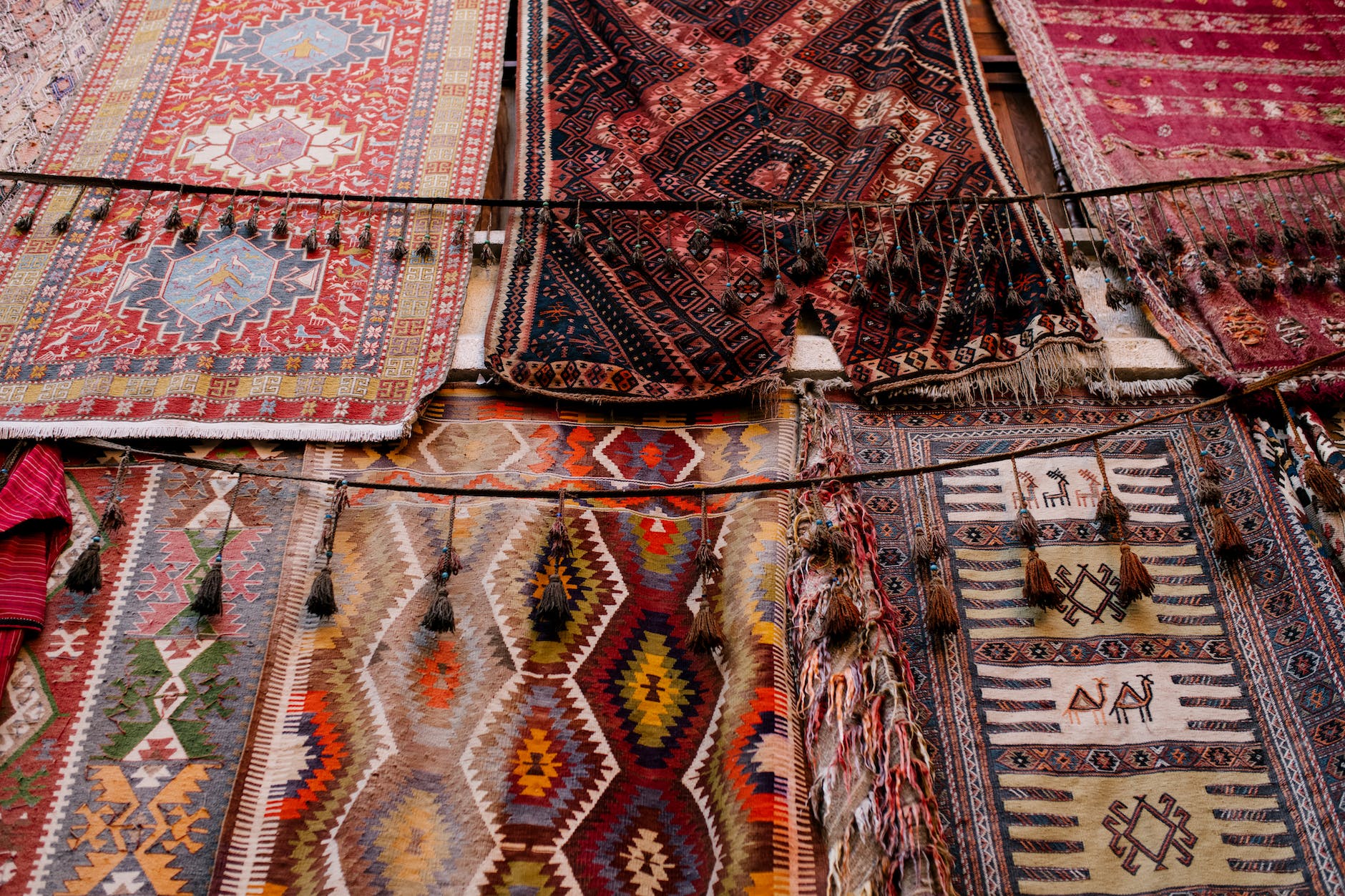Rug Making with a Purpose: Weaving Symbols of History and Culture
Beyond decorating floors, handcrafted rugs echo cultural identity. Through deliberate incorporation of meaningful regional symbols, patterns, materials, and construction styles, rug makers infuse their works with distinct heritage and identity. More than artistry, these textiles become conduits for sharing cultural narratives, commemorating significant events, and passing on folklore wisdom visually. Rugs give artisan groups voice through labor-intensive craft. The purposeful designs chronicle people’s stories across generations. This piece explores how rug making preserves and perpetuates cultural symbols and history.
Cultural Meanings Conveyed Through Traditional Rug Designs
Motifs communicate special significance:
Family Crests
Historic family crests woven into patterns commemorate ancestry and lineage. Scottish clans incorporated unique plaids into textiles as their crest.
Protection Symbols
Ward off misfortune by weaving in spiritual protection symbols like the Turkish Evil Eye, Chinese double happinesses, or Zapotec lightning iconography to safeguard homes.
Ceremonial Markings
Special occasion rugs are woven to celebrate marriages, births, festivals, or deaths. Patterns reference the occasion’s significance through culturally meaningful symbols.
Mythical Beasts
Incorporating mythological creatures like dragons, thunderbirds, or griffins recalls cultural legends and superstitions through symbolic rug motifs.
Ancestral Totems
Animal motifs symbolize revered tribal ancestral spirits – bear clan, turtle clan, and wolf represent different Native American tribal groups through abstract rug symbols.
Storytelling Figures
Male and female figurines act out cultural fables and proverbs within rug motifs. Patterns become pictorial folk story books woven in wool.
Regional Techniques Tie Rugs to Cultural Roots
Local methods maintain textile traditions:
Persian Knotting
Intricate floral medallion motifs against rich backgrounds rely on the meticulous Persian asymmetrical knot to manifest. Design and construction intertwine elegantly.
Kilim Flatweaving
Anatolian tribal references permeate these reversible flatwoven Kilim tapestries bearing ancient geometric motifs and variegated hand spun wool from centuries of localized artistry and customs.
Navajo Blanket Weaving
On traditional Navajo looms, designs take shape with strong geometric figures and native motifs using wool dyed with regional vegetal pigments like sagebrush and rabbitbrush.
Scandinavian Rya Weaving
Norwegian artisans uphold cultural legacy weaving sturdy rya rugs. Pile shags show Nordic symbols, runic letters, reindeer and ships – icons of ancestors who faced harsh winters.
Native American Plaiting
Intricately plaited coiled baskets pass down tribal rug making of desert cultures like the Hopi, anchored in regional materials like yucca and native corns that connect designs to the Southwestern landscape.
Cowhide Stitchery
Rural agrarian communities preserve traditions stitching folk motifs with bright wools onto tanned cowhides, showcasing cultural dress, daily rituals, and animals from regional ranch life embedded in the hides.
Rug Motifs that Chronicle Notable Historical Events
Rugs document significant cultural happenings:
Ceremonial
Special occasion motif rugs commemorate milestones like births, weddings, or funerals through meaningful patterns. Intricate wedding rugs bestow blessings on newlyweds.
Political Commentary
Some Afghan war rugs portray military equipment, soldiers, maps, or cultural ruins as symbolic anti-war statements lamenting decades of regional conflict through poignant textile art.
Migration Stories
Rug designs evolving as groups migrated across continents and cultures blended motifs in new locales. Spanish Colonial rugs mixed Islamic, Gothic European, and Aztec motifs from interconnected worlds.
Revolutionary Symbols
Textiles abandon coats of arms, royalist symbols, and aristocrat motifs after political upheavals as seen in rugs before and after the French Revolution or Russian Revolution. Ideology changes emerge.
Maps
Nomadic weavers like Berbers wove maps of important trade routes and sacred sites into rug patterns to pass navigational knowledge to new generations and document their storied landscapes.
Cultural Awakenings
African rugs shifted from customary tribal patterns to contemporary nationalism motifs like pan-African symbols, flags, and landscapes as nations underwent transformation after colonial independence.
Special Ways Rugs Document Cultural Resources and Ingenuity
Every design reflects its environment:
Regional Dyes
Vegetal indigo blues, saffron yellows, and cochineal reds reveal specific natural resources used for pigments based on local flora, fauna, and minerals unique to each rug making region.
Stylized Motifs
Artists abstract cultural dress, pottery, architecture, animals, and flowers into rug designs that document the aesthetics of daily living in diverse locales across eras. Patterns immortalize lifestyles.
Material Limitations
Rareluxurious materials like silk denoted status in older rugs from societies where silk was extraordinarily precious due to geography. Wool and sturdy cottons prevailed in nomadic tribal rug cultures.
Climate Responsive
Scandinavian Ryijy rugs have heavy insulating piles suited for frigid winters. Breezy cotton dhurries suit hot climates. Material choices evolved based on regionality.
Culture Preserving
Turkish women wove spare fabric scraps into Kilims, recycling cherished clothing into folksy tapestry rugs that preserved village dress patterns otherwise lost to time.
Resourceful Innovation
With limited materials, pioneering Navajo weavers ingeniously dyed wool with desert plants like juniper and bee balm. The Churro sheep they herded produced special wool.
By understanding and celebrating the cultural messages coded within each handmade rug through its colors, materials, symbols, and construction, we deepen appreciation for global diversity. Rug makers empower cultural longevity, recording their communities for posterity – one meaningful knot at a time.
